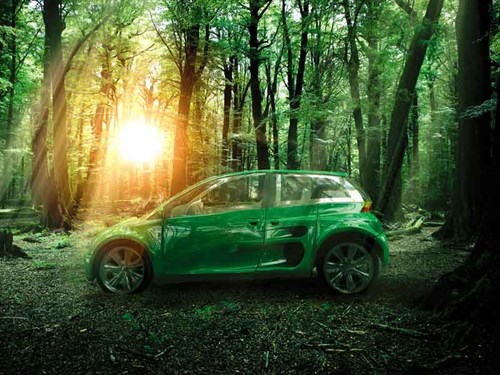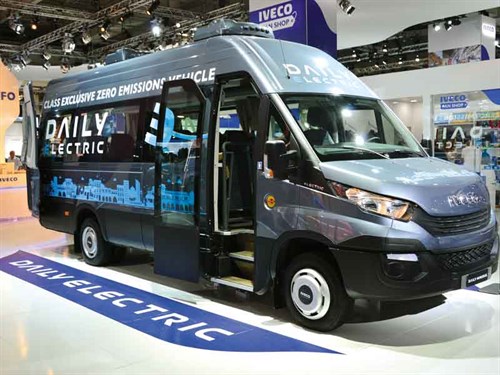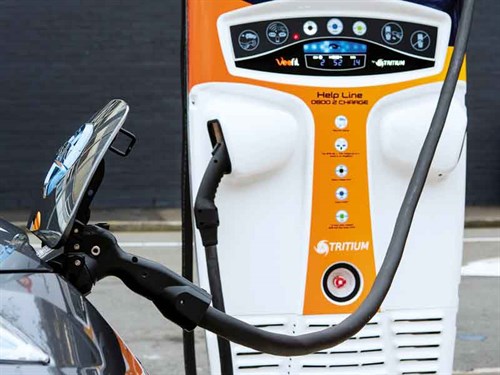Around 1910, a New York newspaper published two photos of the same streetscape taken 10 years apart. The older photo showed the street lined with horses, carriages, and carts.

It was captioned, ‘Spot the Automobile’. It was there, but it took a lot of finding. The latter photo showed the same street lined with automobiles. You guessed right, it was captioned, ‘Spot the Horse’. It was even harder to find. That’s how quickly the automobile revolution took hold. The centrepiece of a similarly significant transport revolution occurring right now is the electric vehicle (EV).
Defining EV
The term EV is all-embracing: passenger vehicles of all types—cars, SUVs, sports vehicles, commercial vehicles, trucks, pick-ups, panel vans, coaches and buses, fire engines, and rubbish trucks—and includes RVs.
Electrically-powered vehicles were among the earliest to hit the road. They were never universally accepted but some survived because they were best at what they did. The humble milk float is a good example.
Used for household milk deliveries in the UK since the 1920s, they have performed almost 100 years of commercial service. With low maintenance, no noise, and no smell, they were ideal. So it is not surprising that the commercial vehicle segment of the EV market is advancing quickly. Not as fast as passenger EVs but quickly nevertheless.
The Yutong Bus Company
The Yutong Bus Company’s development history shows how quickly commercial EV vehicle growth has occurred in China. Founded in 1963 as a bus repair business, it wasn’t until 1993 that they started building new buses.
In 1999, Yutong built their first electric bus, and 17 years later, at the end of 2016, they’d delivered a total of 54,000 EV buses and coaches. Currently, they produce 20,000-plus EV units and 60,000-plus units with internal combustion engines (ICE) each year. Most of the EV buses go to Chinese clients, but small numbers are exported to strategically selected clients in France, the UK, Poland, Iceland, Cuba, and other countries.
Keep in mind Yutong is just one company producing EV buses in China The total number of EV buses in service there in 2017 was 343,500. Yutong built around 17 percent of these; other Chinese manufacturers built the other 83 percent.
The EV car and motorhome market

But get this. The total number of EV buses worldwide in 2017 was 345,000 units. Take out the 343,500 China registered and, of the remaining 1500, 1273 were registered in the EU, 200 in the US, and 27 elsewhere in the world.
These are small numbers compared to the EV car market. At the end of 2016, there were just over two million EV cars in the 12 countries covered in the Global EV Outlook Report*. Currently, EV cars represent 1.1 percent of all cars registered in the 12 countries covered in the Global EV Outlook Report.
Motorhomes have an exciting part to play in the revolution. Grant Brady from the RV rental powerhouse, THL explains: “We have EV motorhome developments in the pipeline, but before we commit to any particular format, we have the be sure there is a support structure in place to service the day-to-day needs of these EV motorhomes.

“For instance, the availability of overnight charging facilities at campgrounds is being examined. Each situation is different. At some locations, charge stations can be installed immediately while others require a power supply upgrade first. Once the infrastructure is up and running, we can send out happy campers in their new Maui EV motorhomes. At THL, we believe that the change will come a lot quicker than is generally expected.”
The EV revolution just is one of a number of transport changes gaining momentum around the world. Vehicles-without-drivers is another revolution occurring now. Individual versus shared ownership of vehicles is just getting underway. EVs along with these other changes herald in a new digitally driven transport age that will surpass the old analogue era of fossil fuels.
Thanks to Grant Brady for his assistance putting this story together
*The Global EV Outlook Report 2017 is published by the OECD/International Energy Agency





